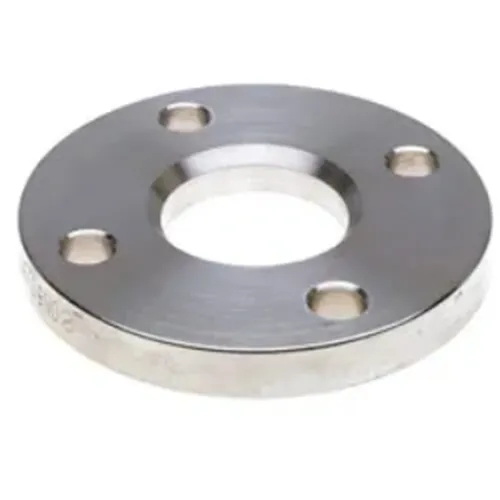-
Cangzhou Yulong Steel Co., Ltd.
-
Phone:
+86 13303177267 -
Email:
admin@ylsteelfittings.com
- English
- Arabic
- Italian
- Spanish
- Portuguese
- German
- kazakh
- Persian
- Greek
- French
- Russian
- Polish
- Thai
- Indonesian
- Vietnamese
- Zulu
- Korean
- Uzbek
- Hindi
- Serbian
- Malay
- Ukrainian
- Gujarati
- Haitian Creole
- hausa
- hawaiian
- Hebrew
- Miao
- Hungarian
- Icelandic
- igbo
- irish
- Japanese
- Javanese
- Kannada
- Khmer
- Rwandese
- Afrikaans
- Albanian
- Amharic
- Armenian
- Azerbaijani
- Basque
- Belarusian
- Bengali
- Bosnian
- Bulgarian
- Catalan
- Cebuano
- China
- China (Taiwan)
- Corsican
- Croatian
- Czech
- Danish
- Esperanto
- Estonian
- Finnish
- Frisian
- Galician
- Georgian
- Kurdish
- Kyrgyz
- Lao
- Latin
- Latvian
- Lithuanian
- Luxembourgish
- Macedonian
- Malgashi
- Malayalam
- Maltese
- Maori
- Marathi
- Mongolian
- Myanmar
- Nepali
- Norwegian
- Norwegian
- Occitan
- Pashto
- Dutch
- Punjabi
- Romanian
- Samoan
- Scottish Gaelic
- Sesotho
- Shona
- Sindhi
- Sinhala
- Slovak
- Slovenian
- Somali
- Sundanese
- Swahili
- Swedish
- Tagalog
- Tajik
- Tamil
- Tatar
- Telugu
- Turkish
- Turkmen
- Urdu
- Uighur
- Welsh
- Bantu
- Yiddish
- Yoruba

Oct . 11, 2024 12:03 Back to list
Understanding the Benefits of Coating Galvanized Pipe for Enhanced Durability and Performance
Understanding Galvanized Pipe Coating A Comprehensive Overview
Galvanized pipe coating has become a fundamental aspect of piping systems, particularly in applications where durability and resistance to corrosion are paramount. The process involves coating steel or iron pipes with a layer of zinc, which serves to protect the underlying metal from oxidization and rust. This article explores the benefits, applications, and processes associated with galvanized pipe coating.
The Galvanization Process
Galvanization is typically achieved through two primary methods hot-dip galvanizing and electro-galvanizing.
Hot-Dip Galvanizing In this method, the clean steel or iron pipe is submerged in molten zinc at temperatures around 450°C (842°F). The high heat causes a metallurgical reaction that forms a series of zinc-iron alloy layers, followed by a layer of pure zinc on the outer surface. This method results in a robust coating that adheres well to the substrate, providing superior protection against corrosion.
Electro-Galvanizing This process involves an electrochemical process where zinc is deposited onto the pipe surface using an electric current. While this method can provide a smoother finish and better control over coating thickness, it generally offers less protection compared to hot-dip galvanizing, as the zinc layer may be thinner and less adherent.
Benefits of Galvanized Pipe Coating
1. Corrosion Resistance The primary advantage of a galvanized coating is its ability to protect steel pipes from rust and corrosion. Zinc acts as a sacrificial anode, meaning it will corrode before the underlying metal does. This extends the lifespan of the pipes significantly, often exceeding 50 years.
2. Cost-Effective Although the initial cost of galvanized pipes may be higher than that of non-galvanized pipes, they prove to be more economical over their service life due to reduced maintenance and replacement costs.
3. Ease of Installation Galvanized pipes are typically easy to install and are lightweight compared to other pipe materials. This also helps in reducing overall labor costs during construction.
4. Versatility Galvanized pipes are suitable for various applications, including water supply lines, HVAC systems, and structural applications in buildings. Their versatility makes them a popular choice in both residential and industrial settings.
galvanized pipe coating

Applications of Galvanized Pipe Coating
Galvanized pipes are widely used in numerous applications across different sectors
- Construction They are often utilized in building frameworks, scaffolding, and railings due to their strength and corrosion resistance.
- Agriculture In agricultural settings, galvanized pipes are commonly used for irrigation systems and livestock watering systems, where exposure to moisture is a concern.
- Water Supply The plumbing industry frequently employs galvanized pipes for water distribution systems, particularly in areas where soil conditions are aggressive and can lead to corrosion.
- Electrical Galvanized pipes also serve as conduits for electrical wiring, providing a protective measure against environmental conditions that could lead to electrical failures.
Maintenance and Longevity
While galvanized pipes are designed to be durable, proper maintenance is necessary to ensure longevity. Regular inspections can help identify any signs of corrosion or wear. In particular, areas where the coating may have been compromised, such as cut ends or threaded joints, should be coated with a zinc-rich primer or paint to prevent rusting.
Conclusion
Galvanized pipe coating is an innovative and effective solution for enhancing the durability and longevity of steel and iron pipes in various applications. By providing a robust barrier against corrosion, galvanized coatings contribute to the sustainability and efficiency of plumbing and construction projects alike. As industries continue to seek cost-effective and reliable materials, galvanized pipes remain a staple choice for many professionals across the globe. Whether used in construction, agriculture, or water supply systems, their advantages make them an indispensable part of modern infrastructure.
Latest news
-
ANSI 150P SS304 SO FLANGE
NewsFeb.14,2025
-
ASTM A333GR6 STEEL PIPE
NewsJan.20,2025
-
ANSI B16.5 WELDING NECK FLANGE
NewsJan.15,2026
-
ANSI B16.5 SLIP-ON FLANGE
NewsApr.19,2024
-
SABS 1123 FLANGE
NewsJan.15,2025
-
DIN86044 PLATE FLANGE
NewsApr.19,2024
-
DIN2527 BLIND FLANGE
NewsApr.12,2024
-
JIS B2311 Butt-Welding Fittings LR/SR 45°/90° /180°Seamless/Weld
NewsApr.23,2024











